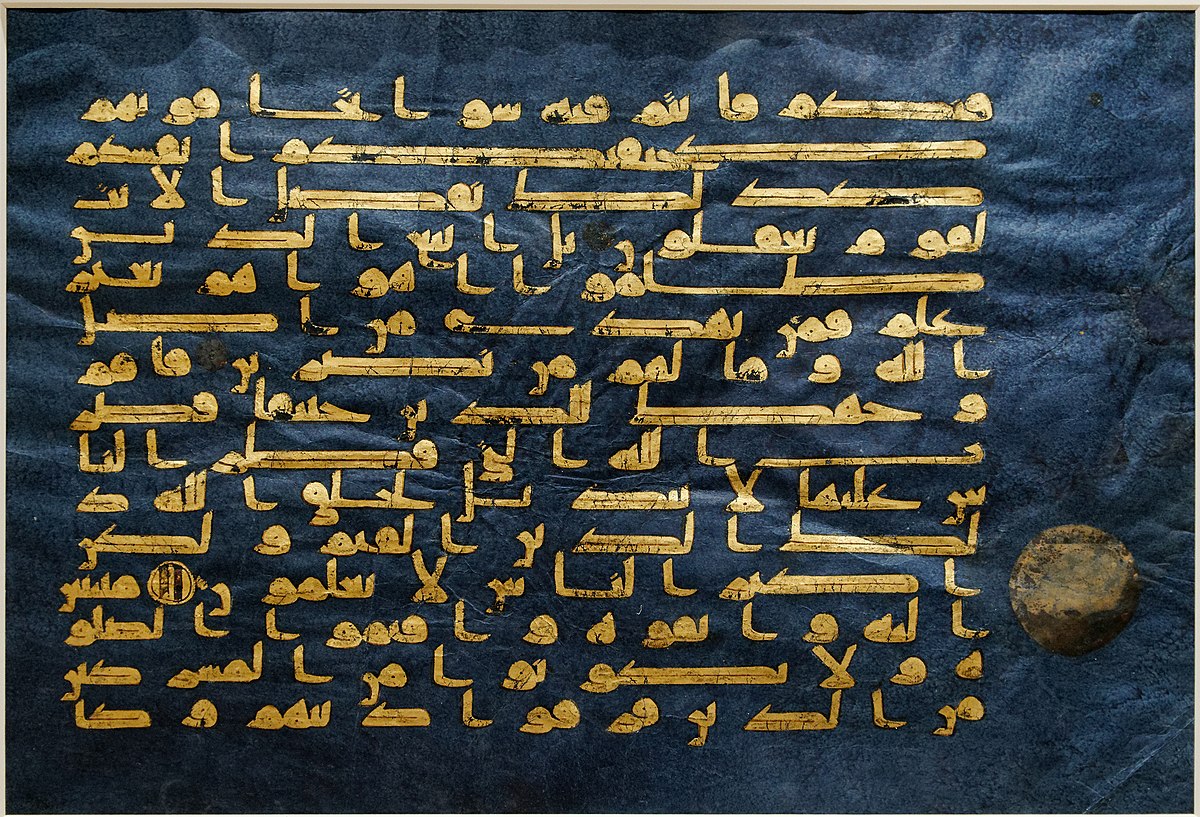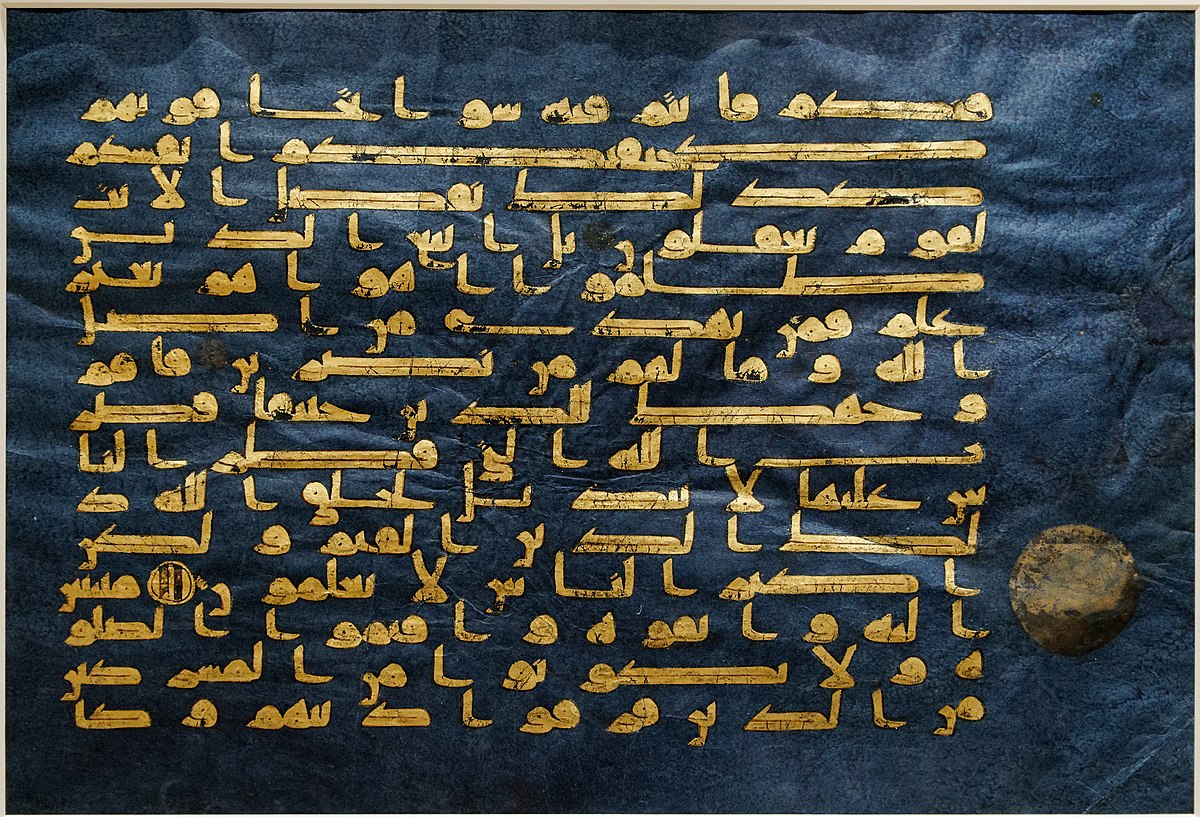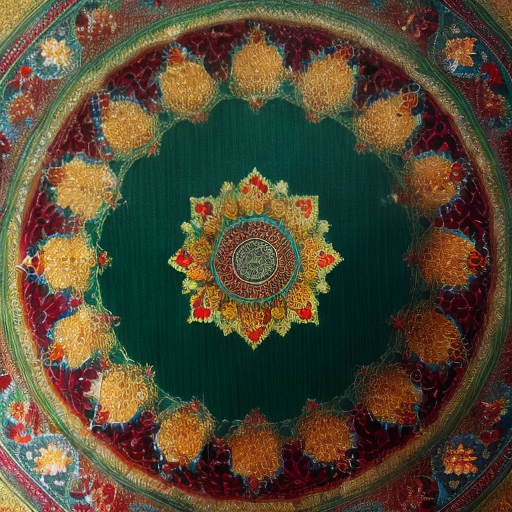
The Reason Why Islamic Art Favors Calligraphy Over Depictions of Humans
Islamic art is known for its intricate designs, vibrant colors, and geometric patterns. However, if you take a closer look at Islamic art, you will notice that it favors calligraphy over depictions of humans. But why is this the case? Why does Islamic art prioritize words over images? In this blog post, we will explore the history and reasoning behind this unique artistic tradition that has captivated people for centuries. So get ready to delve into the fascinating world of Islamic calligraphy and discover why it reigns supreme in the realm of Islamic art!
Islamic art is often characterized by an absence of human figures. This is not because Muslims have a prohibition against figurative art, but because calligraphy is seen as a more perfect form of art.
Calligraphy is central to Islamic Framed art and has been used to decorate everything from mosques to manuscripts. It is believed to be the most spiritual and perfect form of art, as it is a direct expression of the word of God.
Figurative art, on the other hand, is seen as less perfect and more prone to idolatry. For this reason, it has generally been avoided by Muslim artists.
Explanation of Islamic Art and Why Calligraphy Is Preferred
Islamic art is largely characterized by its avoidance of figurative images representing living beings. This is in contrast to the highly stylized and realistic images of humans found in much Western art. The reason for this difference lies in the teachings of Islam, which emphasize spiritual rather than physical reality.
Since Islamic art is based on religious texts, calligraphy is the preferred medium for expressing these ideas. Calligraphy is seen as a more spiritual form of expression, since it is based on the written word of God. In addition, calligraphy is believed to be a more pure form of art, since it does not involve any physical contact between the artist and the paper.
Islamic artists often use geometric patterns and Arabic script to create their works. These elements are believed to be closer to the spiritual world than images of humans or nature. Geometric patterns are seen as a reflection of the infinite nature of God, while Arabic script is seen as the perfect way to represent the divine word.
Examples of Islamic Art That Incorporate Calligraphy
There are many examples of Islamic art that incorporate calligraphy. One such example is the Dome of the Rock in Jerusalem, which was built in the 7th century and features inscriptions of Quranic verses in Arabic calligraphy. The Great Mosque of Damascus also incorporates Arabic calligraphy in its interior decoration. Other mosques around the world also feature calligraphy prominently, such as the Badshahi Mosque in Lahore, Pakistan and the Sultan Ahmed Mosque in Istanbul, Turkey.Another example of Islamic art that incorporates calligraphy is Islamic Canvas Art, where Quranic verses or other texts are decorated with intricate patterns and colors. This type of art originated in Persia and spread to other parts of the Muslim world. One famous example of manuscript illumination is the Blue Quran, which was created in Persia in the 13th century and is now housed in the Topkapi Museum in Istanbul.

Islamic art often uses geometric patterns as well, which can be seen in both architecture and manuscripts. These patterns are created by repeating a certain motif over and over again. One famous example of Islamic geometric patterning is the Star and Crescent motif, which is often used on Muslim flags and other artwork.
How the Ban on Human Images Affects Islamic Art
Some Muslims believe that depictions of humans in art are prohibited, as these images can lead to idolatry. As a result, Islamic art typically features calligraphy instead of human figures. This ban on human images has had a profound effect on the development of Islamic art over the centuries.
Calligraphy is one of the most revered forms of Islamic art, as it is seen as a way to glorify God through beautiful writing. For many Muslims, calligraphy is the highest form of art because it requires both skill and creativity. The ban on human images has led to a focus on calligraphy in Islamic art, which has resulted in some of the most beautiful and intricate calligraphy in the world.
The ban on human images has also had an impact on architecture. Many mosques are decorated with intricate patterns and geometric designs instead of human figures. This is because depiction of humans is seen as disrespectful in Islam and could lead to idolatry. As a result, mosques often feature breathtakingly beautiful designs that are based on geometry and nature, rather than humans.
The ban on human images in Islamic art has led to some truly unique and stunning artwork over the centuries. From intricate calligraphy to breathtaking mosque designs, this prohibition has had a profound effect on the development of Islamic art.
How the Use of Calligraphy in Islamic Art Can Inspire Creativity
Calligraphy is an important element of Islamic art. It is used to decorate the walls and ceilings of mosques, and is also found on Islamic coins, pottery, and other objects.The use of calligraphy in Islamic art can inspire creativity in a number of ways. First, the intricate patterns created by the calligraphy can be visually stunning. Second, the use of calligraphy can add a sense of sacredness or spirituality to a work of art. Third, the calligraphic traditions of different cultures can add cultural richness to a piece of art.
Fourth, and perhaps most importantly, the act of creating calligraphy itself can be immensely satisfying and personally fulfilling. The meditative nature of the activity can help to still the mind and promote feelings of tranquility and peace. In this way, the use of calligraphy in Islamic art can be a source of inspiration for both artists and viewers alike.
Alternatives to Depictions of Humans in Islamic Art
There are a number of reasons why Islamic art favors calligraphy over depictions of humans. One reason is that many Muslims believe that the human form is created in the image of God, and therefore should not be represented in art. Additionally, calligraphy is seen as a more spiritual and intellectual form of expression than depiction of the physical world.Another reason why Islamic artists may favor calligraphy is that it can be used to create highly detailed and intricate patterns. This type of artwork often reflects the beauty of Arabic script and can be seen as a more sophisticated form of expression. Additionally, calligraphy can be used to convey religious messages and ideas, making it a powerful tool for religious and political leaders.
Islamic art has many forms and includes calligraphy, geometric designs, architecture, and more. Calligraphy is one of the most important aspects of this art form due to its religious significance. It honors the written word of Allah in an elegant and beautiful way that cannot be achieved by any other medium. Although some depictions of humans can be found in Islamic art, it is clear that calligraphy remains at the core of this ancient artistic tradition.






Leave a comment
This site is protected by hCaptcha and the hCaptcha Privacy Policy and Terms of Service apply.